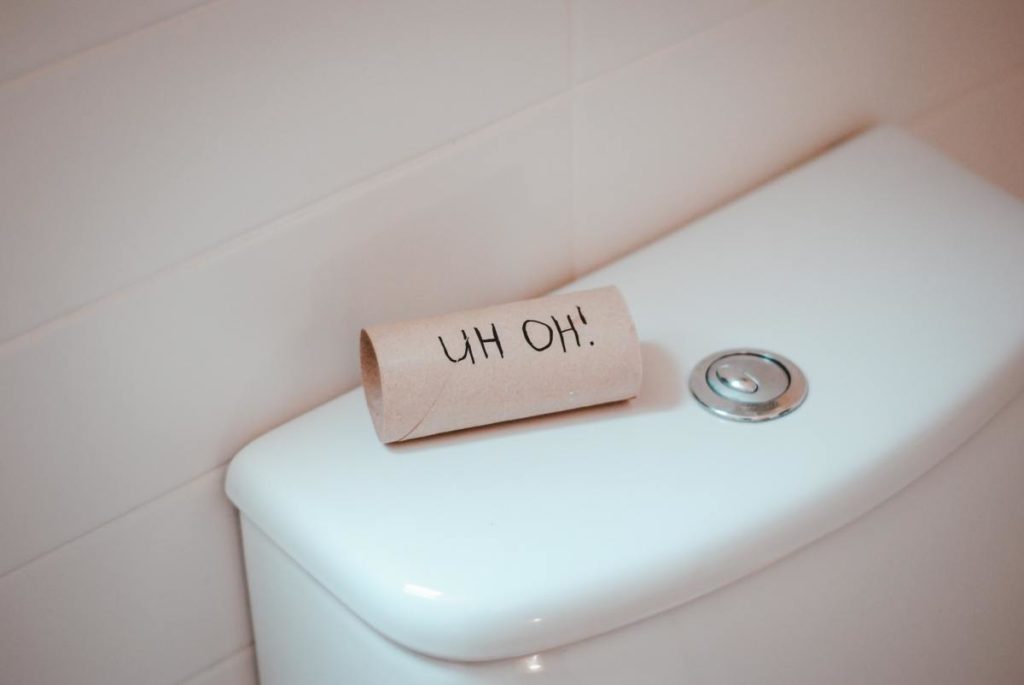Toilets are great for eliminating human waste in a clean and effective manner. But it’s surprising how often people try using them for dual purposes. They only end up with the same results—a nasty clog. Most people expect a curious toddler to flush random objects, but toilets get misused by well-meaning people of all ages. So, what should you do if you realize you have a clogged toilet? And, what are common items that you should avoid flushing?
What to Do If Your Toilet Is Clogged
Very often a clogged toilet is more of a nuisance than anything else. Most clogs result from a blockage somewhere in the line, which the average homeowner can try to fix themselves. First, to self-diagnose a clogged toilet, look for signs such as water that drains from the toilet bowl slowly, water that gurgles up into the shower or bathtub when the toilet is flushed, or water overflowing the toilet bowl. If you suspect you have a clog, try plunging it with a sturdy plunger. If you have a stubborn clog, see cracks in your toilet, or have a broken sewer pipe, Call the Plumbing Doctor for prompt, professional, and affordable service. They have the equipment and expertise no matter what’s clogging your home.
To avoid unnecessary problems, here are some common flushing mistakes people make that lead to major clogs.
“Too Much” Toilet Paper
Toilet paper is designed to break down in water. But it can’t do that if you flush a huge wad of it at once. To avoid a clogged toilet due to excess toilet paper, be mindful of how much you are sending down at once. More than 5 to 8 squares at a time could be pushing it.
Paper Towels and Facial Tissue
Not all paper products are created equal. While toilet paper serves a specific function, so do paper towels and facial tissue. If you are using either one in your bathroom and make a habit of flushing them, you are creating unnecessary risk. Paper towels and facial tissue are designed to absorb water, rather than break down in water. So, you might risk ending up with a huge clog.

Wipes
There are wet wipes marketed as “flushable” and plumbers agree people should not flush them down a toilet. Technically, they will break down, but they take so long to do so, that they pose more of a clog risk than they are worth. Bottom line? Don’t bother.
Q-Tips and Cotton Balls
These small items may seem pretty harmless, but they can cause a major back up in your system. If you make a habit of flushing Q-Tips, cotton balls, cotton pads and more, you’ll only succeed in creating a barrier since these items will just clump together down the line.
Feminine Hygiene Products
Some feminine hygiene products claim to be flushable, but the truth is, all of these items need to be thrown in the trash. There’s no good way to flush a sanitary pad, and eventually tampons will tangle and clog your pipes. These items are designed to be absorbent, so sending them through a plumbing system is less than ideal.

Hair
Sending hair down your toilet will cause problems down the road. It doesn’t break down and builds up over time. Hair will also entangle itself on anything else making its way through the pipes, creating a nasty clog that no one wants to deal with.
Medication
Never flush medication. Not only will it create an expensive clog, but as it slowly breaks down, it enters the local water system. This means the community and livestock are now drinking contaminated water.
Gum
Gum is insoluble, meaning it will never dissolve. It is also a sticky, solid mass. So, what do you think will happen if you send it down the toilet? The best you can hope for is that it makes its way through before permanently sticking to the walls of your pipes.
Bandaids
Most bandages are made of plastic or an elastic fabric that are designed to be waterproof. Combine that with their adhesive properties and you’ve got a tiny disaster waiting to happen. They don’t break down and will build up into a huge clog as they collect anything coming by.
Other than toilet paper, nothing else is designed to break down to prevent a clog. So, anything that gets flushed will either create a blockage in the line or, if it makes its way out of your pipes, will only find its way back into your community water system. The best way to prevent a blockage in your toilet is to start by using it properly.






